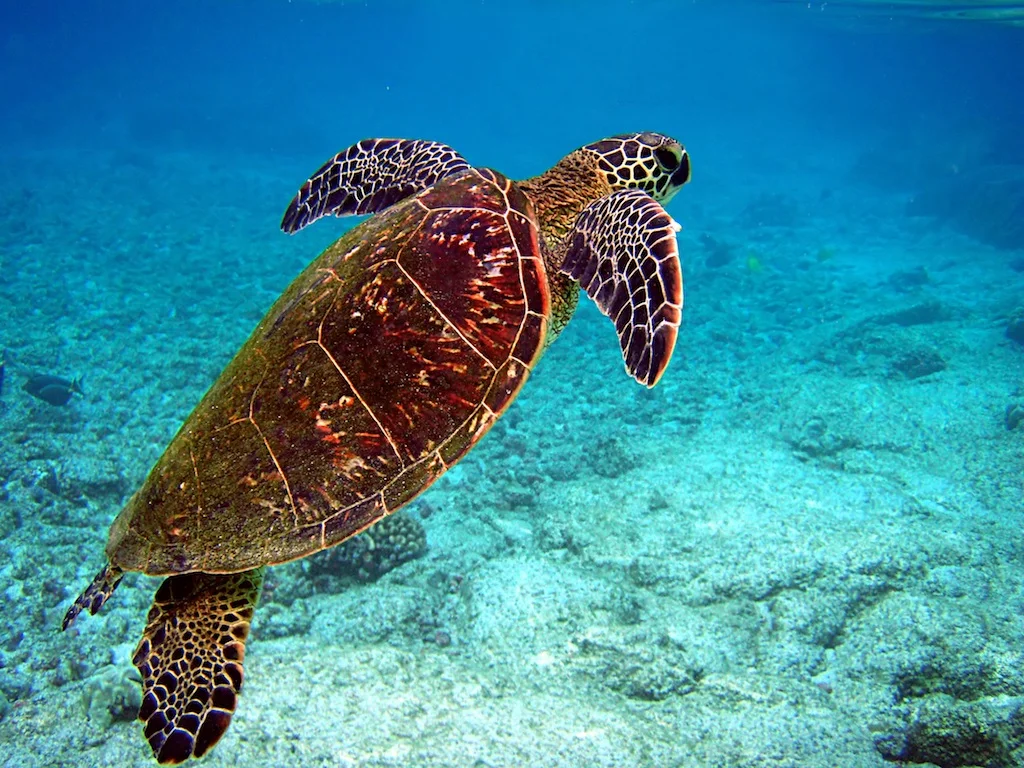Mitigating Turtle Bycatch
While there are many fishing methods and gear modifications that can reduce sea turtle interactions in longline fisheries, the following practices are known to be highly effective in reducing turtle bycatch without compromising the catch rates of target tuna species (Gilman et al., 2007; FAO, 2009a; Pacific Islands Regional Office, 2013):
- Use wide circle hooks (18/0 or larger for shallow-set fisheries).
- Use small, forage fish species (e.g., mackerel/opelu/saba/sanma), rather than squid or pieces of larger incidental bycatch, for bait.
- Set hooks deeper than turtle-abundant depths (>100 m).
- Use monofilament for the main line to reduce sea turtle entanglement and facilitate the release of sea turtles.
From left, circle, J-shaped and tuna hooks, the 3 most common hook types used in pelagic longline fisheries
Circle Hooks
Wide circle hooks appear to reduce the capture of turtles if they are wider at their narrowest point than J-shaped hooks, tuna hooks, and teracima hooks, making it difficult for the circle hook to fit inside a turtle’s mouth.
Furthermore, circle hooks are circular, with the point turned perpendicularly back toward the shank, less exposed in comparison to J or tuna hooks. Thus, if a turtle does bite a circle hook, they are less likely to be deeply hooked (where the hook is swallowed down the throat or pierces the roof of the mouth), making dehooking easier.
Lightly hooked turtles also have a greater chance of surviving than deeply hooked turtles.

